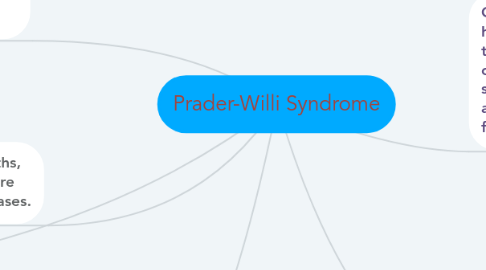Prader-Willi Syndrome
저자: Gretchen Hamor

1. They usually reach adulthood and are able to function in a group home setting, perform vocational work, attend community college classes.
2. Diagnostics: initially made by the physician based on clinical symptoms, confirmed by blood test.
2.1. absence of paternally expressed imprinted genes @ 15q11.2-q13 (65-75%), maternal uniparental disomy (20-30%), or an imprinting defect (1-3%).
2.2. Most cases of Prader-Willi are not inherited, it is caused by a deletion in the paternal chromosome or by maternal uniparental disomy. These occur as random events during the formation of reproductive cells.
2.3. DNA methylation testing. This testing can detect abnormal, parent-specific imprinting. This is the test that used for determining Prader-Willi syndrome.
3. Characteristics: -severe infantile hypotonia with poor suck, failure to thrive, early childhood onset obesity, developmental delay, short stature, scoliosis, sleep abnormalities, small hands & feet.
3.1. The children have an insatiable desire for food (hyperphagia), they must be closely monitored because they always feel hungry.
4. Treatment: there is no current treatment for Prader-Willi, management of the symptoms associated with Prader-Willi syndrome
4.1. Multidisciplinary team approach: speech and language therapy, endocrinologist, psychological therapy, dietitian
4.2. Early detection, addition of growth hormone, early multidisciplinary care can improve the quality of life.
5. Seen in 1:15,000 live births, chromosomal deletions are responsible for 70% of cases.
5.1. Similar to Angelman syndrome. The difference is paternal deletion (Prader-Willi) vs maternal deletion (Angelman syndrome).
6. Prognosis: children are able to mainstreamed into classroom environment. They need a structured environment and sometimes smaller class sizes.
6.1. Need a significant amount of support from peers and family, protection from food availability.
6.2. Complications from morbid obesity, issues with hypogonadism, behavioral or psychological issues.


